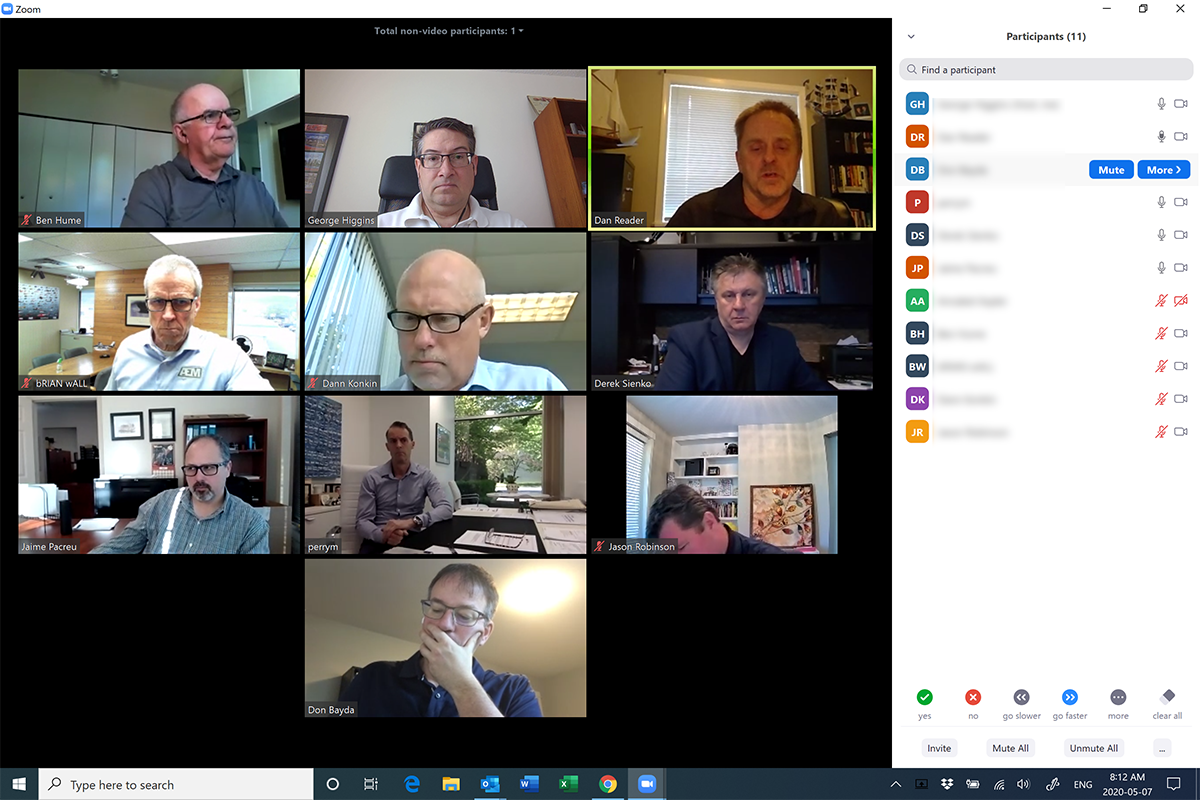Great discussions continue on our 4th virtual Breakfast Forum

Thanks to all that joined us on our 4th virtual Breakfast Forum. Some more great discussions around the current activities/concerns about COVID-19 in the workplace.
We came away realizing that there were four common topics within today’s discussions:
- Mental health of leaders and staff both on-site at the workplace and those working from home
- Communication is key (both for ongoing support and on a return to work/reopening rollout plan)
- What return to work/reopening will look like – don’t move too quickly
- Positive outcomes, lessons learned and silver linings
There are two groups of people in each organization – those who want to come into work due to either social aspects or challenges with working from home and those who are more productive and thrive in the home environment. In both scenarios, we need to be aware of the mental health effects of COVID-19 for both groups, for those individuals who are off work, and when it comes time to bring people back to work. We should expect an increase in emotional concerns at about the 3-6 month mark of return to work. Make sure you’re talking to your teams and having open conversations. There are resources available free of charge on the Diversified Rehabilitation website: ptsdrecovery.ca
It is imperative that as leaders we continue to support our teams with regular communication be it through town hall meetings virtually, one on one touch bases or newsletters. With Premier Horgan’s recent announcement of phase 2 beginning next week, there will be some organizations that are preparing to shift towards a resumption of work or reopening. Reopening for your organization may be creating a different structure with additional precautions in place. Be clear in your communications with your expectations of how this will look in your own organizations. Ensure that you’re involving your teams in these discussions for their buy-in.
It was widely agreed that in terms of return to work/reopening, it would be catastrophic to ease up on the new policies put in place in the workplace too quickly. A few things that organizations can do to continue to maintain safe practices are:
- Split shifts to separate staff and staff continuing to work from home.
- Temperature checks and making sure staff know to stay at home when they are sick.
- reducing overlapping shifts
- For those in the office, have measures in place for physical distancing, cleaning and sanitizing regularly (ie every 4 hours)
- Masks offered to all employees
- Crews working alternate shifts, staggered break times for everyone to allow each to have their own table in the lunchroom
- “Parking lot meetings” for suppliers and clients to avoid unnecessary entry into the workplace
Our participants widely agreed that one big positive outcome is the increase of face-time in front of their teams, and more regular communication has been established. A few tips were shared for keeping things interesting, engaging and connective – have a different team member chair some of your daily meetings, or have meeting participants each share a personal story of how they have been affected by COVID-19.
We hope you’ll join us next week on May 14th at 8:00 am to join in on the continued discussions.



